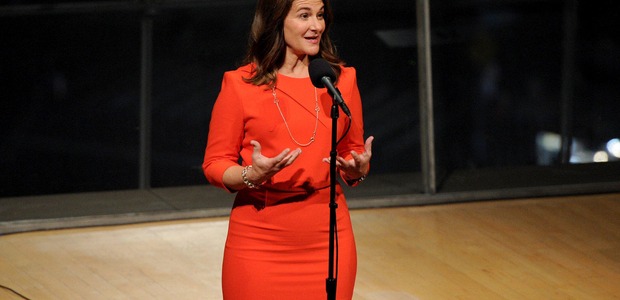advertisement
Melinda Gates shifts focus to getting more Women in Tech
Melinda Gates has spent the past 16 years seeding social change through the world’s largest private philanthropy, the Bill and…

Melinda Gates has spent the past 16 years seeding social change through the world’s largest private philanthropy, the Bill and Melinda Gates Foundation.
She and her husband have presided over an endowment that has grown to $39.6 billion — and they’ve added Warren Buffett as a third steward. The foundation funds initiatives that aim to enhance healthcare and reduce extreme poverty globally, as well as expand educational opportunities and access to information technology in the United States. But even with such a broad mandate, it can’t do everything.
So Gates is stepping out on her own. Though she’ll continue to work on the foundation, she’s building up a personal office to dedicate resources and attention to an issue of central personal importance: getting more women into tech — and helping them stay there.
advertisement
“I worked at Microsoft during a decade when computers went from luxuries to everyday necessities, so I saw firsthand how transformative the tech industry can be in all our lives. That’s why I’m worried that women remain drastically underrepresented in the tech workforce,” said Melissa Gates on a Facebook page.
Gates got her start in tech. After graduating from Duke with a computer science degree (and an MBA), she spent a decade working at Microsoft. That was back in 1987, when just over a third of undergraduate computer science degrees went to women. Nearly 30 years later, fewer than one in five CS degrees are earned by women. That, according to Gates, constitutes a crisis. “This has got to change,” she said in an Interview with Blackchannel.
The question, of course, is how. And its in regards to this that she is turning her attention to promoting Women in Tech. “When I was in school in the 1980s, women got about 37 percent of computer science degrees and law degrees then. Law went up to 47 percent now. In medicine, we were at 28 percent in 1984. That’s gone up to 48 percent. Computer science went from 37 percent to 18 percent.”
advertisement
Gates finds this data troubling, and she’s dedicated to putting resources toward figuring out how to both increase and maintain female representation in STEM fields. Gates says right now she is focused on learning more about the problem before making investments. Areas of interest she’s pinpointed include problems in the education pipeline that push girls away from STEM subjects, adequate role models for young girls interested in tech, and perception problems with male-dominated fields like the game industry.
“We all know there’s this leaky pipeline. It starts in elementary school, then middle school, then high school, and so on. I want to figure out the solutions,” Gates says. “We don’t know for sure, but it looks like the correlation is that when the gaming industry became very male, all of a sudden you had women in computer science drop off.”
Beyond education, Gates is looking at broader structural problems making it more difficult for women to pursue careers in technology.